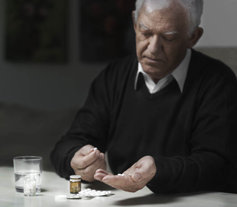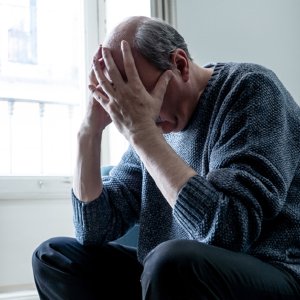Prescription Opioid Abuse in the Elderly an Urgent Concern

You may be aware of the growing prescription drug epidemic, but the addicts may not be who you expect. Prescription opioid abuse in the elderly is reaching unprecedented levels and is an urgent concern. Out of all medication prescribed in the United States, those sixty-five and older use one-third of it. And last year, 2.8 million seniors abused prescription drugs; a number that continues to grow.
Oxycodone, hydrocodone, and methadone seem to be the drugs of choice, as these are present in about forty percent of deaths caused by opioid misuse. Yet doctors don’t seem to have any intention of curbing their prescriptions, especially since the elderly seem to suffer from so many chronic conditions. Pharmacists are also terribly lenient about the medication they dispense, despite the laws requiring them to turn away anyone who might be abusing prescription drugs. It may be that they don’t know what to look for–especially in an unassuming senior.
Unexpected Dealers
The pills aren’t coming from the street–they’re coming from well-meaning friends, family medicine cabinets, or unsuspecting doctors. A person may bring home thirty Vicodin after a root canal, but only use four or five. The remainder gets stored in the medicine cabinet, where it is easy for addicts to pilfer a few without causing notice.
It is common for the elderly to suffer from a number of ailments, so doctors may not blink an eye at requests for multiple prescriptions. However, officials urge doctors to be particularly cautious when it comes to the elderly. Older bodies metabolize drugs more slowly, increasing the risk of overdose. A typical amount of medication for a twenty-year-old is not the same for someone sixty-five or older.
Doctors should maintain close supervision over elderly prescriptions. Instead of prescribing three months’ worth of medication, only a few weeks’ worth is necessary.
The Baby Boomer Mentality
The generation that grew up during the sixties is likely to have a far different approach to drugs than their parents did. They grew accustomed to drug and alcohol abuse as teenagers, and we are seeing this repeated in their older age as elderly drug abuse increases. They learned to cope with hard times by using drugs to forget about it, to not feel. As hard times surface again, what with the loss of loved ones, the loss of one’s job, children leaving home, or lack of goals, baby boomers are relying once again on substance abuse to get them through.
This plus the availability of drugs to people in this age group spell a recipe for disaster.
Red Flags
Signs of drug abuse are similar to symptoms that come with old age, so be cautious when evaluating for a drug problem. Watch for the following signs of medication abuse and get help immediately:
- They appear to have a number of medical conditions that require prescriptions.
- Their chronic pain is higher than average.
- They doctor-shop and only keep appointments related to pain-medication, not others.
- Personal hygiene is lacking and their appearance becomes drastically unkempt.
- They are frequently “losing” medication.
- At the first doctor’s visit, they demand a prescription for a controlled substance.
- They ask for early refills.
If you notice these or any other things that seem out of character take action. Educate yourself through materials found at www.narconon.org/drug-abuse/ and find ways of talking to the addicted person and getting them the help they need. It is never too late for anyone to get help but the key is not to wait.

 ®
®